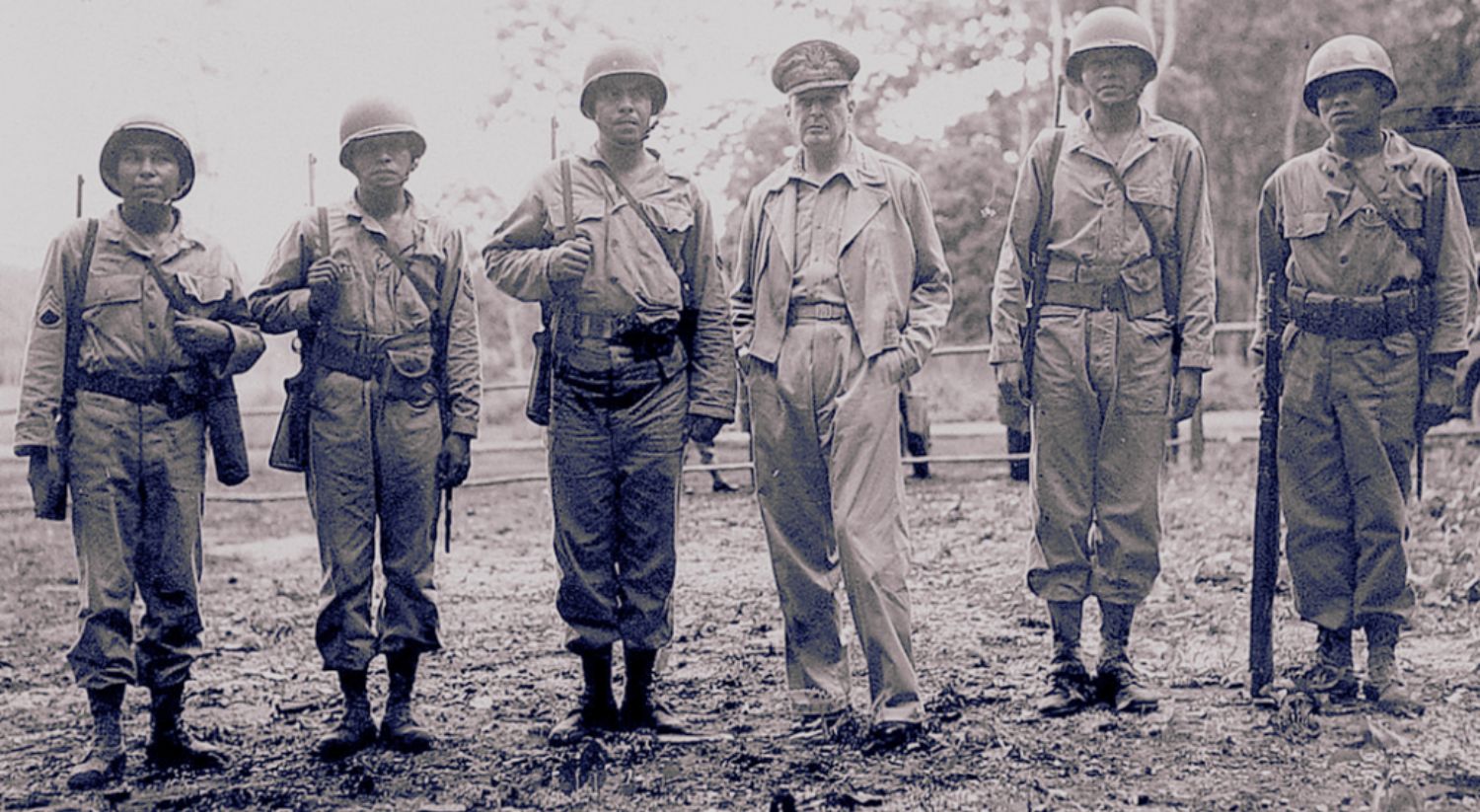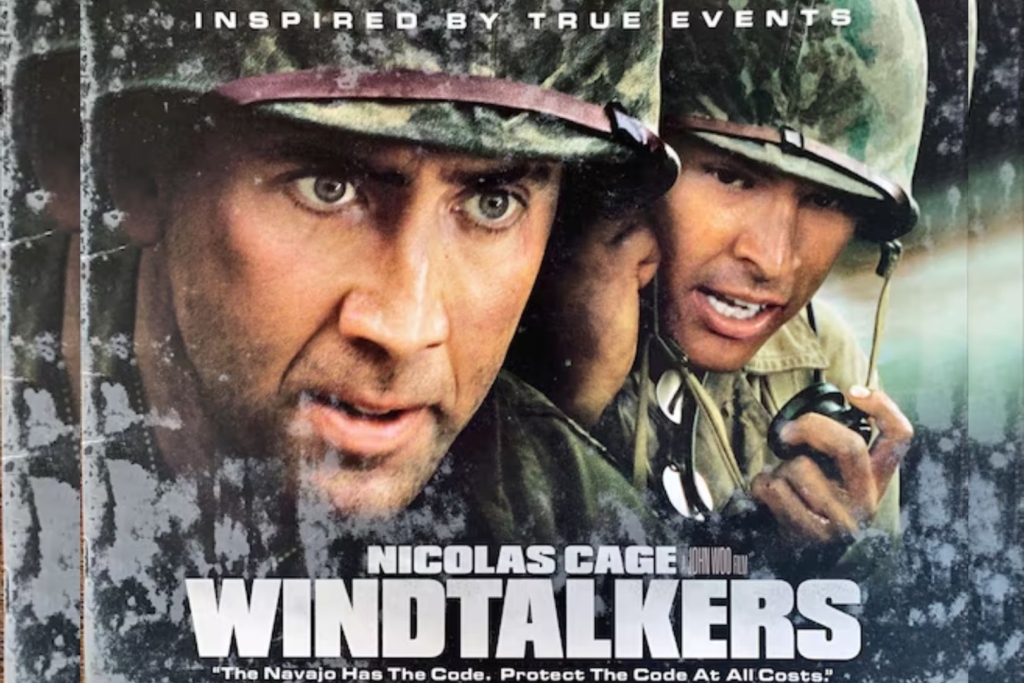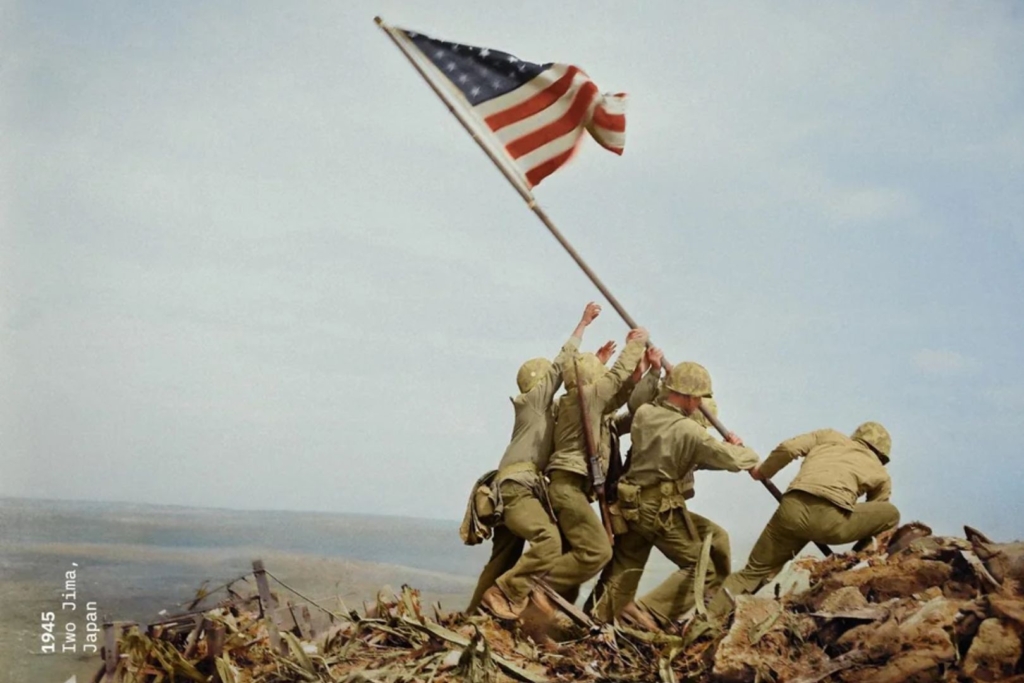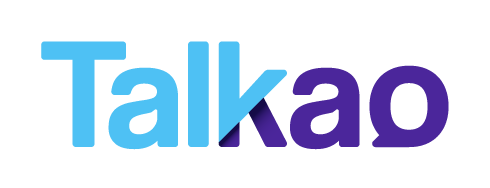
The Navajo Code was one of the most effective wartime strategies in history. At its core, the Navajo Code was an encrypted communication system that used language itself as a tool for defense. The United States Marine Corps employed several Indigenous languages to transmit messages—languages that were completely unknown to the Germans. And that’s precisely where their power lay.
For years, the enemy was completely baffled by a communication code that seemed impossible to break. For Japanese generals, deciphering the Navajo Code became an obsession. But they never succeeded. They could never figure out what the Allies were saying, and thanks to this, Allied forces were able to advance successfully across the Pacific.
But did you know that the Navajo Code wasn’t the only time a language helped win a war?
We’ll explore some of the most fascinating examples where language played a crucial role in military strategy. We’ll also share a curious historical anecdote involving Euskera in the Philippines—a story that would be nearly impossible today, thanks to multilingual conversational AI and the accuracy of modern machine translation.
Still, these stories remind us just how far humanity has come in just a few decades.
What was the Navajo Code and why was it so important in World War II?
You’ve probably heard the term “Navajo Code” before. In fact, it’s the subject of one of the most iconic war films highlighting the role of Native Americans in World War II. Starring Nicolas Cage, the movie Windtalkers received multiple awards and remains one of the most emotional war stories ever portrayed on screen.
One of the film’s most powerful aspects was its depiction of the crucial role Native American communities played in the U.S. military. It also exposed a painful truth: despite their significant contributions, Navajo soldiers faced discrimination and contempt from many of their peers. Still, beyond this undeniable injustice, the movie tells a true and remarkable story. Let’s dive into the historical context and understand why the Navajo Code was so important to the Allied victory in the Pacific.

What was the Navajo Code?
Simply put, the Navajo Code was a coded communication system used by the United States Marine Corps during World War II. It was based on the Navajo language, spoken by the Diné people. For the Japanese military, this language was completely unintelligible—and that gave the Allies a major advantage.
But the strategy wasn’t as simple as just speaking Navajo. The so-called “Code Talkers” created an encrypted version of their own language. Key military terms were assigned Navajo words with no direct or obvious translation, making the code nearly impossible to break. In addition, they developed a phonetic alphabet system in Navajo to spell out unfamiliar words.
For American military strategists, using the Navajo Code was a decisive moment in the Pacific Theater. At that time, multilingual AI and real-time machine translation were science fiction—so Indigenous languages like Navajo remained entirely unknown to enemy forces.
Why was the Navajo language chosen?
You might be wondering: why Navajo specifically? The main reason was its linguistic complexity and limited exposure during the 1940s. At the time, Navajo hadn’t been extensively documented and was largely unknown outside Native communities.
Soon, the code proved highly effective in the field. Some key features that made Navajo ideal for military coding included:
- No standardized written form, making it difficult to learn or reproduce.
- A grammar and phonetics system radically different from European languages.
- Spoken only by a small group of people, mostly in the Southwestern U.S.
- The Japanese, America’s primary enemy in the Pacific, had no access to Navajo speakers.
These factors made the language virtually indecipherable to enemy forces. Even when transmissions were intercepted, they had no tools for accurate audio translation. In short, the Navajo Code was nearly flawless.
How was the Navajo Code created?
The idea came from Philip Johnston, an American who grew up among the Navajo and spoke the language fluently. Aware of its strategic potential, he proposed the concept to the U.S. Marine Corps in 1942. To prove its value, he arranged a demonstration with Navajo speakers—and they passed with flying colors.
Soon after, 29 young Navajo men were recruited to develop the first coding system. They created a military dictionary in Navajo to translate key terms like:
- Fighter plane: tsidi neel (hummingbird)
- Submarine: besh lo (iron fish)
- Bomber: jay-sho (war bird)
They also created a phonetic alphabet, assigning Navajo words to each letter. For instance, the letter A was represented by wol-la-chee (ant). Code talkers were required to memorize the entire system, as no written records were allowed—avoiding leaks in case of capture.
The role of the Navajo Code in World War II
The Navajo Code turned the tide in several key Pacific battles. Major victories at Guadalcanal, Iwo Jima, Saipan, and Okinawa were all made possible in part by this powerful communication tool. The code allowed for the rapid and secure transmission of military orders between units.
Unlike other encryption methods that took up to 30 minutes to encode or decode, the Navajo Code was lightning fast. Navajo code talkers could transmit a message in under 20 seconds, with near-perfect accuracy.
For example, during the Battle of Iwo Jima, six Navajo code talkers were crucial to the U.S. victory. They transmitted over 800 flawless messages, and American commanders later declared that without the Navajos, the battle would not have been won.
And all of this was achieved without modern digital tools—only the brilliance and resilience of the Navajo soldiers made it possible.
Was the Navajo Code ever broken?
Surprisingly, no. The Navajo Code was never deciphered by Japanese forces—not even partially. Its strength came from two levels of encryption: first, the use of an unfamiliar Indigenous language, and second, a custom military code layered over it.
Even if a Japanese interceptor had recognized the language as Navajo (which was highly unlikely), they still couldn’t decode the meaning. Not only were the words used outside of their original context, they were also embedded within a unique encryption system.
For this reason, the Navajo Code is considered one of the most secure military codes in history. Even General Douglas MacArthur acknowledged the courage and value of the Navajo Code Talkers. Sadly, this recognition was not shared by all their fellow soldiers.
A long-overdue recognition
Despite their invaluable service, the Code Talkers were sworn to secrecy for decades. The program remained classified until 1968, and many of the veterans returned to their communities without public acknowledgment.
It wasn’t until the 1980s and 1990s that they began receiving honors and official recognition. In 2001, President George W. Bush awarded the Congressional Gold Medal to the 29 original creators of the Navajo Code—a long-overdue tribute to their bravery and strategic genius.
Unfortunately, several of the Code Talkers had already passed away—long before their contributions were honored both in the U.S. and globally.
You might wonder why such an effective strategy was never widely replicated. The answer is surprising: Navajo wasn’t the only language used as a military tool. Let’s look at some of them.
Other languages used as military codes
Today, with the precision of audio translation technologies, the idea of an undecipherable language seems almost impossible. Multilingual conversational AI has made it nearly impossible for any language to remain truly unknown. However, when we talk about languages being used as codes during military conflicts, it’s essential to place them in their historical context.
We’ve already explored the Navajo Code as an incredibly effective communication strategy. But this wasn’t the only time in history that a language was used as a military tool.
Throughout the 20th century—and even earlier—other Indigenous and minority languages from the Americas were transformed into powerful weapons of war.
These unique tongues became unbreakable codes on the battlefield. They shielded sensitive military operations and left a legacy that deserves recognition today.
Let’s take a look at just a few of the most recent cases.
But before we dive in, let’s answer an essential question: Why were these codes so effective?

Indigenous languages as tools of war
In times of war, the need to protect information becomes absolutely critical. Traditional encryption systems, while effective, often require time, technology, and are vulnerable to interception. For this reason, some military forces turned to alternative solutions—such as using languages unknown to the enemy. They chose languages that were difficult to learn and lacked a standardized written form.
Indigenous languages fit these requirements perfectly. In addition to being spoken by small communities, many of them have grammatical structures completely different from dominant European languages. Most were poorly documented—or not at all. This made them living codes, impossible for enemies to crack. Here are just a few of the most well-known examples.
Choctaw: The precursor to the Navajo Code
Before the famous Navajo Code in World War II, another Native American language was used for military purposes. During World War I, the United States Army enlisted soldiers who spoke Choctaw—a language from the Muskogean family, primarily spoken in Oklahoma. These Muskogee soldiers transmitted messages during the Meuse-Argonne offensive in 1918.
At the time, the German Army had managed to intercept and decode much of the Allied communication. However, by switching to Choctaw, American forces regained the security of their transmissions. This improvised communication system provided a significant tactical advantage and would later inspire the development of the Navajo Code decades later. It was a brilliant example of audio translation precision in action.
Comanche: The voice of lightning
During World War II, in addition to the Navajo Code, the U.S. Army enlisted other Native American tribes. One of the most notable were the Comanche, who developed their own linguistic coding system for use on the battlefield—particularly in the European theater.
The so-called Comanche Code Talkers played a key role in the Normandy landings in 1944. These ancestral warriors transmitted vital information to Allied forces. Like the Navajo, they adapted their language to include modern military terms that didn’t exist in their traditional vocabulary. For example:
- Tank: Turtle
- Airplane: Bird
- Bombing: Lightning
Their service was so highly valued that in 2013, President Barack Obama awarded them a posthumous honor. The Comanche Code Talkers were formally recognized as American war heroes.
Meskwaki: The signal corps’ hidden weapon
Another important example was the use of the Meskwaki language by Native soldiers serving in the U.S. Army. Although not as numerous as the Navajo Code Talkers, the Meskwaki also made key contributions during World War II in the European theater.
In 1941, a group of 27 young Meskwaki men enlisted to serve as bilingual communicators. By using their native language, they were able to transmit crucial messages during combat operations without the risk of interception. The Nazis were never able to decode the enigmatic Meskwaki code. Though their story is less known, their role was no less significant in securing Allied success.
Indigenous American languages played a valuable role in war strategies. The Navajo Code and other Native tongues became powerful military assets. Beyond the strategic value, the fierce reputation of these Native warriors often intimidated enemy forces. However, the United States was not the only country to adopt this strategy. Let’s take a look at how Basque (Euskera) was also used in a military context by the Spanish army.
Basque in the Philippines: A secret Spanish weapon
Although not an Indigenous American language, Basque (Euskera) was also used for military purposes—earning it a special mention. During the Philippine War in the late 19th century, the Spanish military turned to Basque-speaking soldiers to transmit orders. Why? Because Euskera was completely unintelligible to both the Filipino forces and the foreign powers involved in the conflict.
At a time when communication channels were easily compromised and technological resources were limited, using a minority language like Basque proved to be a clever way to avoid espionage. Conversational AI and multilingual real-time translation weren’t even imagined in the wildest pages of Jules Verne.
Documented in several Spanish military sources, the use of Basque proves that the idea of leveraging unknown languages is far from new. Nor is it exclusive to the United States—it’s a recurring tactic seen in various global conflicts. In summary, Euskera played a key role in securing Spanish military communications in the Philippines.
Strategic advantages of these code languages
Using lesser-known languages as military codes offers multiple strategic benefits. Today, precision in audio translation gives armies a powerful edge over their enemies. These are just a few of the key advantages:
- Impossible to decode without native speakers
- Fast communication without complex equipment
- Flexible language adaptation for real-time coding
- Maximum security thanks to the lack of written records
Moreover, these strategies reduce the risk of translation errors and enable direct communication on the battlefield. Of course, in today’s world, using these languages would be nearly impossible. Why? Mainly because multilingual conversational AI has erased many of the language barriers that once existed.
But let’s imagine a scenario:
What would you do if you were a general intercepting a message in an “unknown language”?
You’d translate the audio using AI technology
Picture this: you’re in the middle of a military operation and you intercept a communication in a language you’ve never heard before. No one in your unit recognizes it. What would be your next move? First, identify the language—and then begin decoding. How? With multilingual conversational AI, it’s surprisingly easy. Here’s how:
- Using an app like Talkao Translate, you can accurately identify the spoken language thanks to its advanced audio translation accuracy.
- With Talkao’s real-time translation feature, you can recognize and translate up to 125 languages, dialects, and indigenous tongues. This allows you to detect not just common languages, but dozens of lesser-known ones as well.
- If the message is in video format, Talkao’s live streaming translator lets you translate the dialogue effortlessly in real time.
And what if the message is written?
Even easier. Thanks to AI text translation tools and built-in smartphone features, translating written messages has never been simpler:
- With AI-powered text recognition and translation, you can decode entire paragraphs in just seconds—directly from your mobile device.
- Using Talkao’s camera translator, there’s no need to transcribe anything. Just point your phone’s camera at the text—whether it’s printed, handwritten, or part of an image—and it instantly recognizes dozens of alphabets.
Clearly, it’s unthinkable for modern armies to rely on these kinds of coded messages today. Current military strategies involve far more advanced encryption technologies and software systems. But as Albert Einstein once said, if humanity continues to resolve its problems through war…
“The wars of the future will be fought with sticks and stones.”










Newsletter